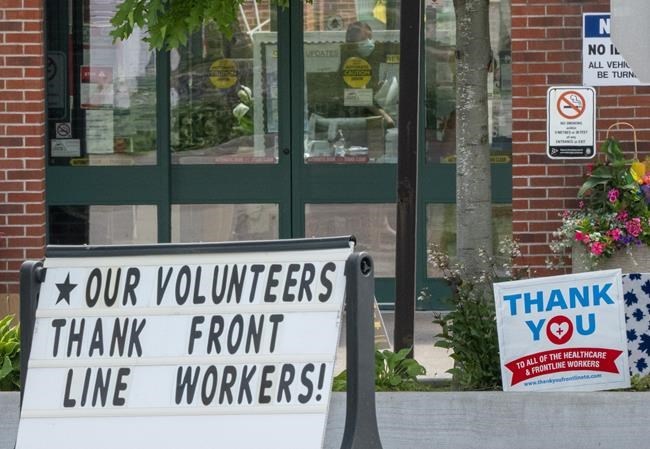Ontario's long-term care homes are having trouble securing liability insurance for COVID-19, a situation that could force some of them to close, a group representing more than 70 per cent of the province's homes says.
The Ontario Long-Term Care Association says its homes are being offered new policies without a key provision: coverage for infectious diseases, including COVID-19.
The association has now turned to the federal government for help, saying potential claims could place a burden on the homes' finances, and loans could be denied over the lack of coverage.
"We’re operating in good faith trying to do the best we can, but we really do need help with this and we need help urgently," said CEO Donna Duncan.
Previously, long-term care homes received $5-million to $10-million coverage for damages or claims related to infectious diseases, Duncan said.
Now, insurance companies are including a "contagious disease exclusion endorsement" in policies for the homes, she said.
COVID-19 and a laundry list of other diseases are specifically not covered, according to one policy obtained by The Canadian Press.
The Insurance Bureau of Canada, which represents the majority of insurance companies in the country, said coverage for losses related to communicable diseases is available in certain policies but isn't easy to get.
"In an active pandemic environment, coverage for pandemic-related financial losses would naturally be extremely difficult to obtain," spokesman Steve Kee said.
"This situation is akin to trying to get fire insurance when your house is on fire."
Insurance companies continue to provide general liability insurance to long-term care homes, he said.
Duncan said some homes have already lost liability insurance against infectious diseases when they renewed their deals this summer.
Without that coverage, some homes are being refused loans and lines of credit, she said.
In one case, Duncan said, a small home that hasn't had a single case of COVID-19 sought to build a new facility to get away from the three- and four-bedroom wards that have proven to be like death traps if COVID-19 got in. The facility needed financing to get the project going, but was denied money from a lender because of the lack of liability insurance for COVID-19, she said.
The lack of coverage against infectious diseases also leaves directors and members of boards personally liable to any legal action, Duncan said.
There are numerous lawsuits, including several class-action suits that have already been brought by grieving families against homes where residents died of COVID-19.
Duncan said the majority of homes have insurance renewals set for Dec. 31.
Her association has pleaded its case to the federal government in a letter sent late last week, asking Ottawa to provide a "backstop" and essentially insure the insurance companies.
"In consultation with insurers, reinsurance companies and major lenders, it is clear to us that long-term care is now essentially uninsurable for outbreaks," Duncan wrote.
The insurance industry is open to the association's federal government backstop idea, Kee said.
The Prime Minister's Office referred questions to the Minister of Health, which did not immediately respond to questions from The Canadian Press.
In Ontario, the majority of homes are for-profit, with the remainder not-for-profit or municipally owned.
Several experts questioned whether it is appropriate for taxpayers to insure for-profit insurance companies and thereby cover any claim against long-term care homes.
Tamara Daly, the director of the York University Centre for Aging Research and Education, said taxpayers providing insurance to the long-term care industry is not workable.
"I think it would be a knee-jerk reaction to publicly fund liability insurance," she said.
Daly and Samir Sinha, the director of health policy research at the National Institute on Ageing and a professor of medicine at the University of Toronto, said public money would be better spent fixing the long-term care home system in the province rather than fixing the insurance issues.
"If we dealt with the fundamental issues right off the beginning, if homes had enough staffing, enough PPE, they may not have been in the situation in the first place," Sinha said.
More than 1,900 residents of long-term care homes have died from COVID-19 since the pandemic hit. The number of cases in the province's 625 facilities are surging once again as the second wave takes hold, with outbreaks in 72 homes by mid-October.
This report by The Canadian Press was first published Oct. 20, 2020.
Liam Casey, The Canadian Press
